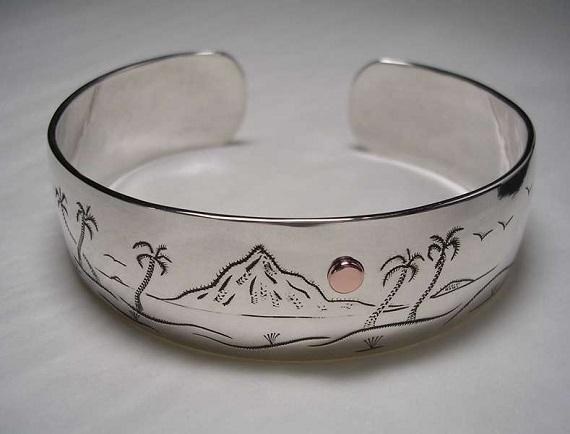We’ve all heard the terms 14K, 18K, 22K etc., but do we know what it means?
Well, here it is.
When we talk about the K in gold, we are talking about a Karat. A Karat is not that veggie that your mother said you should eat. It is a unit of measure used in the jewelry industry.
Let’s start at the top. When we say “pure gold“, we usually mean that the gold is 100% gold and nothing else. But the truth of the matter is that the gold industry standard for “pure” is .9995 pure gold. Not quite 100%.
Technically speaking, the term Pure Gold should not be used to indicate this level of purity. So, the gold trade industry has adopted the term Proof Gold to signify this level of purity (.9995)
Proof Gold has become the standard in the gold trade. So now you know that Proof Gold is .9995 pure gold. In percent, it is 99.95% pure gold.
For use in jewelry, gold is refined even further than proof gold. It is refined to .9997 or better. Usually, it is .9999. The term for this very highly refined gold is Fine Gold. So when we talk about Fine Gold, we are talking about the purest form of gold commonly used in the jewelry trade ( 99.97% to 99.99% pure or better).
Here comes the Karat
Fine Gold is too soft to be used for most jewelry. It is subject to rapid abrasion and doesn’t hold form well. It is therefore alloyed (mixed) with other metals to make it harder and more suitable for jewelry. This alloy or mixture of gold with other metals is termed Karat Gold and is abbreviated K in the USA.
Detour —>
I say in the USA because in some European countries, the abbreviation can be either K or C. the USA jewelry trade chose to use the K to avoid confusion with another term known as the carat, abbreviated C, which is another unit of measure that is mostly used to indicate the weight of precious stones and sometimes pearls. But that’s another story.
<— End Detour
Fine Gold is expressed as 24 karat: As you recall, Fine Gold has a purity of .9997+. The plus sign (+) means that it can be more than 99.97% pure gold but not less. Qualities below this are divided by 24 to express their proportionate degree of fineness. This means that one karat gold is one part fine gold out of a possible 24 parts.
From this information, you can easily determine how much gold is actually in that ring or pendant of yours. You just take the Karat number and divide it by 24. For example, let’s say that your ring has a 14K stamp on it. You just take the 14 and divide it by 24 and VOILA!, your ring is made up of 58.33% pure gold. The rest is other metals that have been added to make it harder and more suitable for a long lasting piece of jewelry.
Here is a table indicating the karat content and the actual percent of gold in some of the commonly used karat golds.
Note ~ 24K is considered 100% gold; even though it can be as low as 99.97% gold!
24K = 100% gold ~ 0% other metals
22K = 91.67% gold ~ 8.33% other metals
18K = 75% gold ~ 25% other metals
14K = 58.33% gold ~ 41.67% other metals
12K = 50% gold ~ 50% other metals
10K = 41.67% gold ~ 58.33% other metals
So, now you may ask- If 18K gold is only 75% pure gold, and 14K gold is only 58.33% pure gold, what is the other 25% and 41.67% (the other metals)?
Good question. We will get into that next time when we discuss the different colors of gold.
Until next time,
Isidro
Resource Box:
~ The K in Gold ~ by Isidro Nilsson ~ energyrings.com

